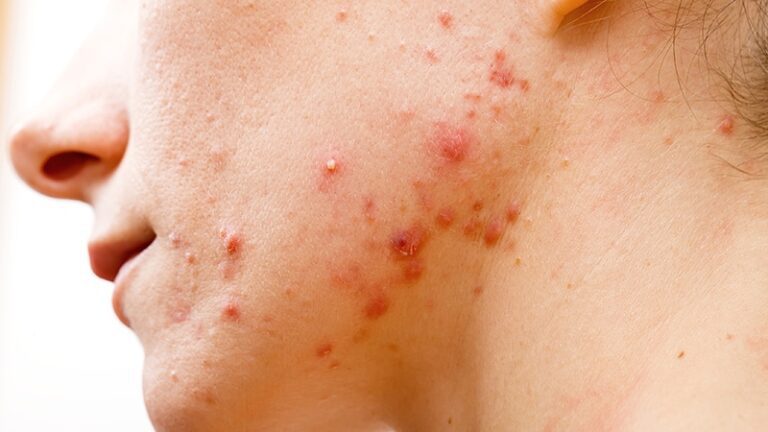CARLSBAD, Calif. — After Arash Moradzadeh, MD, treated the first 100 consecutive patients in his practice with a 1726 nm laser (AviClear) following Food and Drug Administration (FDA) clearance to treat mild to severe common acne in March 2022, 90% experienced clearance at 1 year.
“Combining AviClear with medical therapy and energy-based devices provides the best results,” Moradzadeh, who practices facial and plastic surgery in Beverly Hills, California, said at the annual Controversies and Conversations in Laser and Cosmetic Surgery symposium. “You must do all 300 pulses per treatment and you must use settings of 19.5-21.5 J/cm2 to get a great result.”
AviClear became the first 1726 nm laser to be cleared by the FDA for the treatment of mild to severe acne vulgaris, followed a few months later by the clearance of the 1926 nm laser, the Accure Acne Laser System. However, there are few long-term “real-world” studies of these two devices, according to Moradzadeh.
The protocol for Moradzadeh’s study included three AviClear treatments 3-4 weeks apart combined with medical therapy and other energy-based devices such as a near-infrared Nd:YAG laser (Laser Genesis) and a non-ablative fractional laser (LaseMD Ultra ). , with follow-up at 1 month, 3 months, 6 months, 1 year, 1.5 years and 2 years. Pain management options are included acetaminophenan anesthetic cream and cooling before and after intercourse.
Of the 100 patients, 90 were clear at 1 year, six patients were nearly clear at 1 year, three patients were nonresponders and one patient was lost to follow-up, Moradzadeh said. “Two of the three nonresponders did not receive the 300 pulses per treatment,” but all three were cleared with isotretinoin treatment, Moradzadeh said. “What we know now from talking to other providers is that you really have to do all 300 pulses to get the best results,” he said.
Of the 90 patients who achieved clearance, 80 remained clear at 1.5-2 years and 10 are nearly clear or have mild acne. “Of these, eight are adult women with hormonal acne and two are adolescent men,” he said. “All 10 cleared with a fourth AviClear treatment and lifestyle modifications that included eliminating whey, creatineand skin care products containing them vitamin E in combination with vitamin C”.
During a question-and-answer session following the presentation, Jeffrey Dover, MD, director of SkinCare Physicians in Chestnut Hill, Mass., said general dermatologists have been slow to adopt the AviClear and Accure devices for treating acne patients “because, For the most part, they are experts in treating acne with all the tools they have. They’re not used to paying out of pocket for a treatment that’s not covered. I’m not comfortable with that conversation.”
For example, the 14 dermatologists at SkinCare Physicians “almost never prescribe the 1726 nm devices for acne because it’s not in their sweet spot,” Dover continued, noting that one issue is that acne specialists want more data.
In his experience Nazanin Saedi, MDclinical associate professor of dermatology at Thomas Jefferson University in Philadelphia, 1726 nm laser devices for acne “are a nice fit for women of reproductive age who have acne and don’t want to do Accutane [isotretinoin]and also for teenagers who are either going to be noncompliant with Accutane or their parents are concerned about side effects and potential developmental effects,” he said at the meeting. “That’s where we found patients coming in wanting to do treatments and how it offers something that medical treatments lack.”
Regarding cost concerns for AviClear or Accure treatments, Roy G. Geronemus, MD, who directs the Laser & Skin Surgery Center of New York, New York, advised considering the long-term benefits. “If you do the math, it’s really cost-effective to use the 1726 nm devices if you consider the fees, the cost of topical over-the-counter items, as well as the cost of prescription drugs,” Geronemus said. “In the long run, you save money for the patient.”
Dover acknowledged that it was “a valid and important point,” but said that when the issue is discussed with general dermatologists who treat many acne patients, “they say patients are more willing to pay [for a prescription]…from writing a check for $800 or $1000 per visit.”
The recently updated American Academy of Dermatology care instructions on the management of acne vulgaris, published in January 2024, called the available evidence “insufficient” to develop a recommendation on the use of laser and light devices to treat acne. Although the 1726 nm laser was approved by the FDA for acne treatment in 2022, the authors of the guidelines wrote that “its evidence was not evaluated in the current guidelines due to a lack of a randomized, controlled trial.”
Moradzadeh revealed that he is a key opinion leader for Acclaro, Benev, Lutronic and Sofwave and Cutera, the maker of AviClear. Dover said he is a consultant to Cutera and conducts research for the company. Saedi has disclosed that he is a consultant, an advisory board member, and/or has received equipment and research support from several device and pharmaceutical companies. Geronemus has disclosed that he serves on the medical advisory board and/or is an investigator for several device and pharmaceutical companies, including Accure. He also owns shares in the company.


